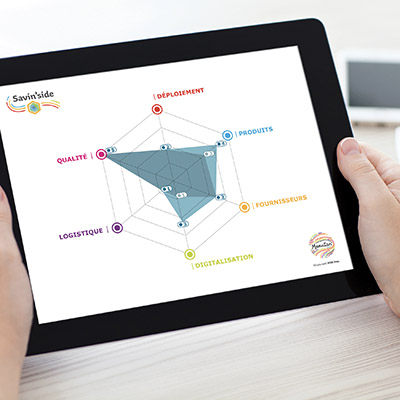Within organisations, and more particularly within large companies, process efficiency and productivity are too often hampered by excessive compartmentalisation. The siloed operating model, also known as siloed organisation, can slow down and even damage information. This hinders the company’s overall performance, but also that of the procurement process. Companies are complex ecosystems, and their processes are all affected by segmented organisations and departmental silos. Process efficiency depends on how freely information circulates between the stakeholders involved in one capacity or another. Therefore, it is advisable to optimise the fluidity of exchanges to accelerate the procurement process, boost their efficiency and achieve overall success.
The siloed organisation of people
Siloed teamwork is a scourge for any organisation. If each department (procurement, finance, sales, etc.) acts without giving enough consideration to the tasks and responsibilities of other departments or to the interdependencies that exist between the teams, then there is a significant risk of missing growth opportunities and/or generating additional costs. As journalist Gillian Tett reminds us in her book The Silo Effect, "silos can create tunnel vision, or mental blindness, which causes people to do stupid things."
For example, optimising product consumption and rationalising the supplier portfolio are considered key factors for savings. These goals can only be achieved if all stakeholders work together and share the same vision of what the general interest is.
Compartmentalisation does not happen because of employee resistance. Often, communication problems are actually the result of people focusing more on day-to-day requirements and being experts in their field, thus feeling like they don’t need outside contributions. However, greater cross-team collaboration, combined with shared responsibility, is a source of overall efficiency. Implementing cross-departmental teams, regular knowledge sharing meetings, or even cross-team key performance indicators can help to work together better. In this respect, a business’s company culture and work environment are crucial to fostering this state of mind.
The siloed organisation of technologies
Siloed organisation can also be seen at the core of digital solutions. This results in a certain heterogeneity in IT architectures. The dichotomy between the solutions implemented in a company’s departments is yet another obstacle to the overall efficiency of the procurement process.
This phenomenon, which can be observed in many companies, is the result of three factors:
- The pace chosen by teams to start their digital transformation;
- The various business priorities (procurement, finance, legal, etc.) that determine which technology will be picked;
- An easier access to digital technology, making the role of IT departments less crucial when selecting solutions, thereby reducing their ability to harmonise processes.
Nevertheless, interoperability of solutions (or an overall integration strategy) remains necessary to ensure continuity in the procurement process. This is the only way solutions can efficiently communicate and collaborate, share databases and benchmarks, and even feed shared workflow platforms (for example, validation circuits or decision support).
There are many benefits to implementing interoperable digital solutions within procurement departments. The contributors involved in improving the performance of the procurement process will be able to completely control procurement. It is not only necessary to track end-to-end flows, but also to keep pace with nomenclature and triggers. Contributors will also have access to information on each supplier contract and thus be able to build a solid foundation for objective partner evaluation.
The siloed organisation of data
A siloed organisation can also result in data disaggregation, meaning that raw data is particularly disorganised or only accessible by one given department. This lack of transparency can negatively impact companies.
Often, this phenomenon is caused by IT systems not mixing with each other. However, collecting data in a concerted manner and sharing it in an identical format is the best way to optimise the procurement process. Having reliable and undisputed indicators available across the board makes it possible to chart a path to progress and set a common goal. Without this, processes are slowed down and any informed decision-making is curtailed.
In the world of procurement, sharing information about suppliers and logistics providers avoids wasting time and risking errors when re-entering data. Lastly, pooling sales data, sales forecasts and customer satisfaction survey results give each department the means to adapt its actions to the real market situation, in order to offer the best possible customer experience.
The procurement process is even more effective when it is driven by a common vision and collective, shared management between all the contributors: Buyers, but also finance, legal, marketing, customer support, sales forecasting teams, etc. Clearly, the existence of barriers between individuals, systems or data runs counter to this common-sense principle. Especially since these different types of silos can feed on each other and amplify their impacts. By breaking down silo mentality between departments, the procurement function is better equipped to mobilise collective intelligence, guarantee effective risk management and create value for the company as a whole.









